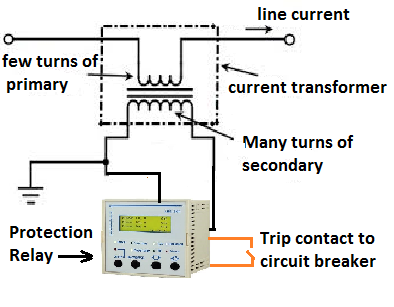Protection of the electrical network is paramount for ensuring the isolation of the faulty section in order to maintain uninterrupted power supply to other healthy electrical netwoks. The protection relay and the current transformer which measures the current and fed that current to the protection relay must be most reliable. The careful selection of the protection class CT is most important parameter to ensure no CT saturation at the time of fault. The protection class CT has more knee point saturation point as compared to metering class CT.
Protection class (P class) CT is connected to the protection relay that gives tripping command to circuit breaker at the time of fault condition. The protection scheme of feeder as given below.
At the time of the fault, the primary current of CT increases abnormally high and the core can get magnetized above its rated capacity and whatever fault current flowing in the circuit can’t be reflected in the secondary side of the CT. This phenomenon is known as the saturation of CT. If CT gets saturated at the time of the fault, the protection relay will not operate.
5P10 class CT:
P stands for protection class. If the primary current is 10 times to the rated primary current of the CT, the CT will function perfectly, within the rated composite accuracy class 5 %.
5P20 class CT:
P stands for protection class. If the primary current is 20 times to the rated primary current of the CT, the CT will function perfectly, within the rated composite accuracy class 5 %.
A CTR of 200/5 with 5P10 class will give error of 5 % if the primary current through the CT is 2000 ampere.
A CTR of 200/5 with 5P20 class will give error of 5 % if the primary current through the CT is 4000 ampere.


